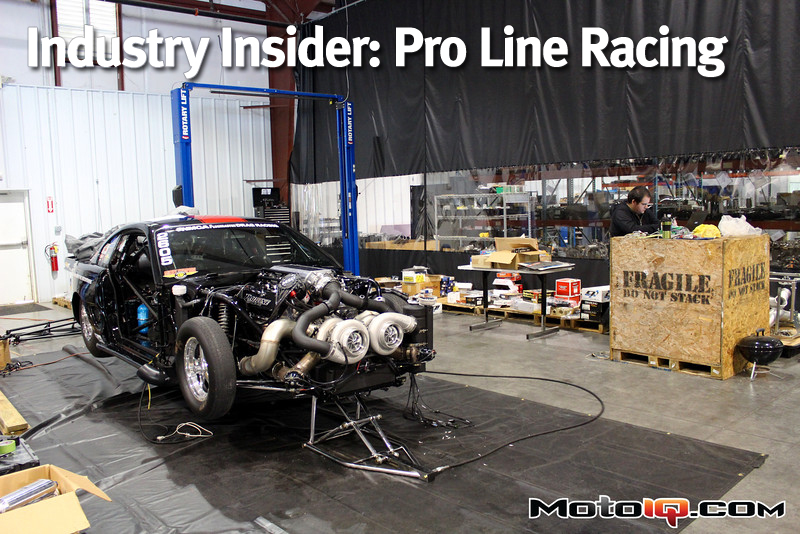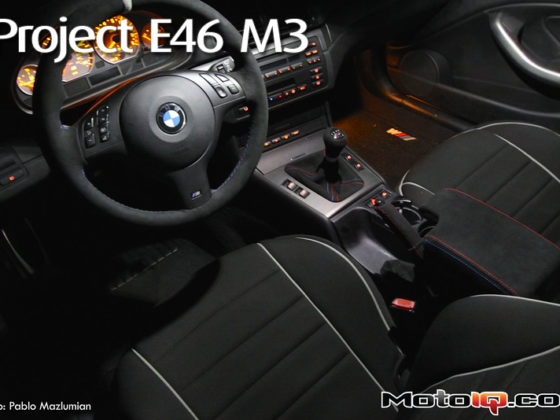
Industry Insider: Pro Line Racing
The Atlanta metro area is quite a big place. But, despite its size, most residents wouldn't know where Ball Ground, Georgia is. To anyone wanting to get down the drag strip with 4,000+ horsepower, however, this exurb 50 miles outside of the city is special, because that is where Pro Line Racing calls home.
 Pro Line Racing is located on a sleepy street in a sleepy industrial park in an unassuming (and unlabeled) Ball Ground building, which happens to be near where its founder, Eric Dillard, lives. With 24,000 square feet of floor space, PLR, as it is known in the industry, machines, assembles, repairs, tests, and tunes some of the baddest engines in drag racing today. They also happen to run several NHRA and PDRA Pro Mod drag racing teams out of the same facility. How many engine builders out there can house several full-size tractor trailers, RVs, a speed boat, several lifts and still have space left over for an entire machining floor and several assembly rooms? The list is short. PLR is on it.
Pro Line Racing is located on a sleepy street in a sleepy industrial park in an unassuming (and unlabeled) Ball Ground building, which happens to be near where its founder, Eric Dillard, lives. With 24,000 square feet of floor space, PLR, as it is known in the industry, machines, assembles, repairs, tests, and tunes some of the baddest engines in drag racing today. They also happen to run several NHRA and PDRA Pro Mod drag racing teams out of the same facility. How many engine builders out there can house several full-size tractor trailers, RVs, a speed boat, several lifts and still have space left over for an entire machining floor and several assembly rooms? The list is short. PLR is on it. PLR “only” got its official start in 2005 when Eric Dillard and Doug Patton opened the original 6,000 square foot shop, but the team were no strangers to the scene. Now, the duo command a bit of a drag racing empire. Glory lines the walls at PLR, and it's hard to find a space in the office area that isn't covered with a success story. If that's not enough, perhaps the lineup of Wallys will convince you. Many racers pine their whole lives after a single trophy bearing the likeness of NHRA founder Wally Parks – PLR casually displays seven.
PLR “only” got its official start in 2005 when Eric Dillard and Doug Patton opened the original 6,000 square foot shop, but the team were no strangers to the scene. Now, the duo command a bit of a drag racing empire. Glory lines the walls at PLR, and it's hard to find a space in the office area that isn't covered with a success story. If that's not enough, perhaps the lineup of Wallys will convince you. Many racers pine their whole lives after a single trophy bearing the likeness of NHRA founder Wally Parks – PLR casually displays seven. But enough mushy stuff. What about the meat of the operation? The dirty, oily and sweet-smelling machine shop floor? You might encounter the smell of cutting fluid, but this place is clean. A large array of Sunnen equipment, both computerized and manual, is carefully organized in the machining area to aid Pro Line in getting their high-performance engines out the door, to the tune of around 2-3 engines a week. In the background, Jonathan Crosby does some detail work on a big-block Chevrolet cylinder head.
But enough mushy stuff. What about the meat of the operation? The dirty, oily and sweet-smelling machine shop floor? You might encounter the smell of cutting fluid, but this place is clean. A large array of Sunnen equipment, both computerized and manual, is carefully organized in the machining area to aid Pro Line in getting their high-performance engines out the door, to the tune of around 2-3 engines a week. In the background, Jonathan Crosby does some detail work on a big-block Chevrolet cylinder head. A close-up of the cylinder head Jonathan was working on shows the kind of attention to detail that Pro Line employs. In this case, various block-facing water ports are welded closed and then the cylinder head is run through the planer, a process called “dry decking”. Final passes take off only 0.001” (one thousandth!). Why this process? Even with high-quality ARP head studs, the extreme boost levels (50+ PSI) Pro Line's engines routinely encounter can result in some head lifting. Closing these water passages helps prevent coolant from entering the combustion chamber or otherwise going where it is not desired.
A close-up of the cylinder head Jonathan was working on shows the kind of attention to detail that Pro Line employs. In this case, various block-facing water ports are welded closed and then the cylinder head is run through the planer, a process called “dry decking”. Final passes take off only 0.001” (one thousandth!). Why this process? Even with high-quality ARP head studs, the extreme boost levels (50+ PSI) Pro Line's engines routinely encounter can result in some head lifting. Closing these water passages helps prevent coolant from entering the combustion chamber or otherwise going where it is not desired.


